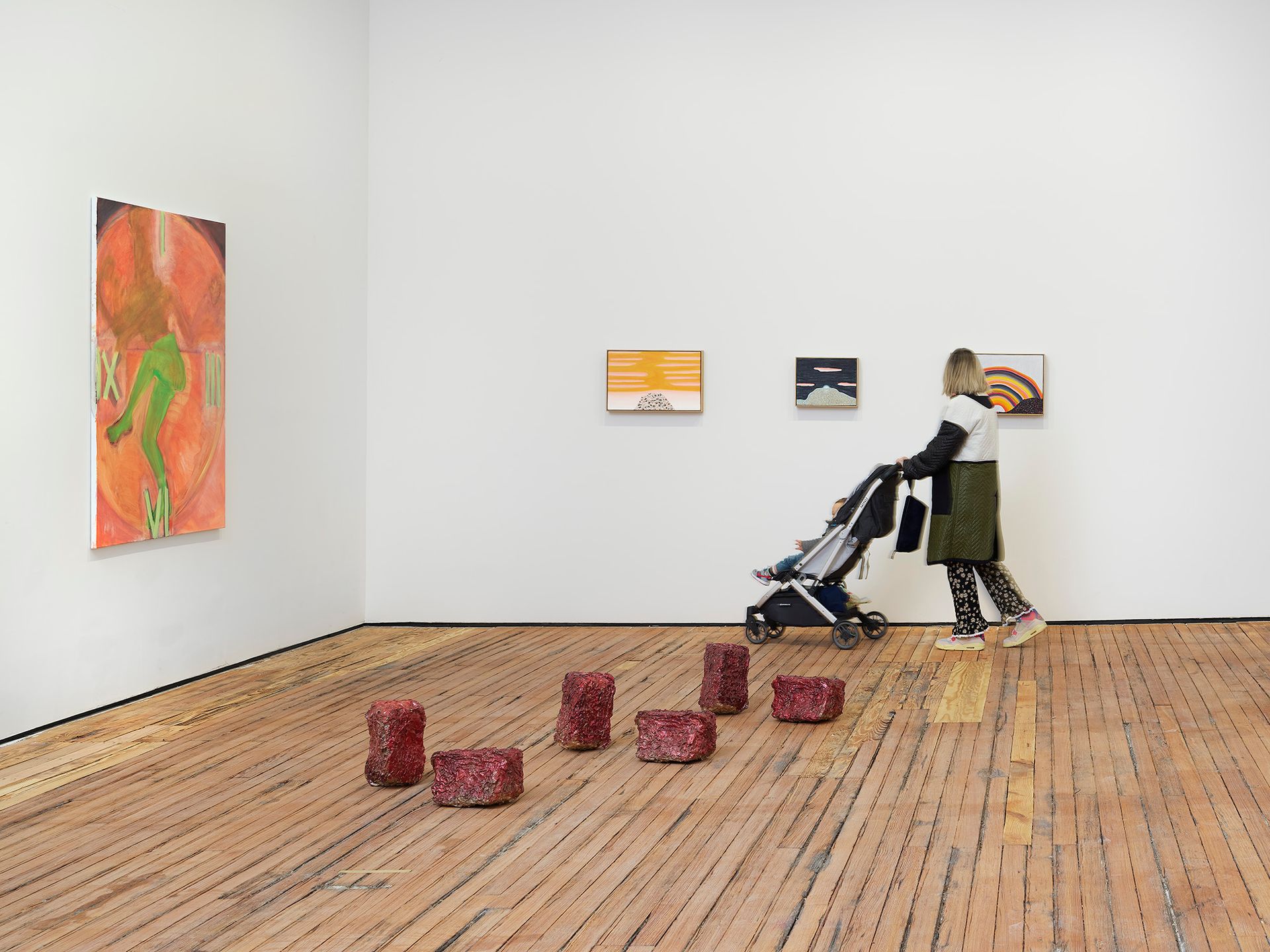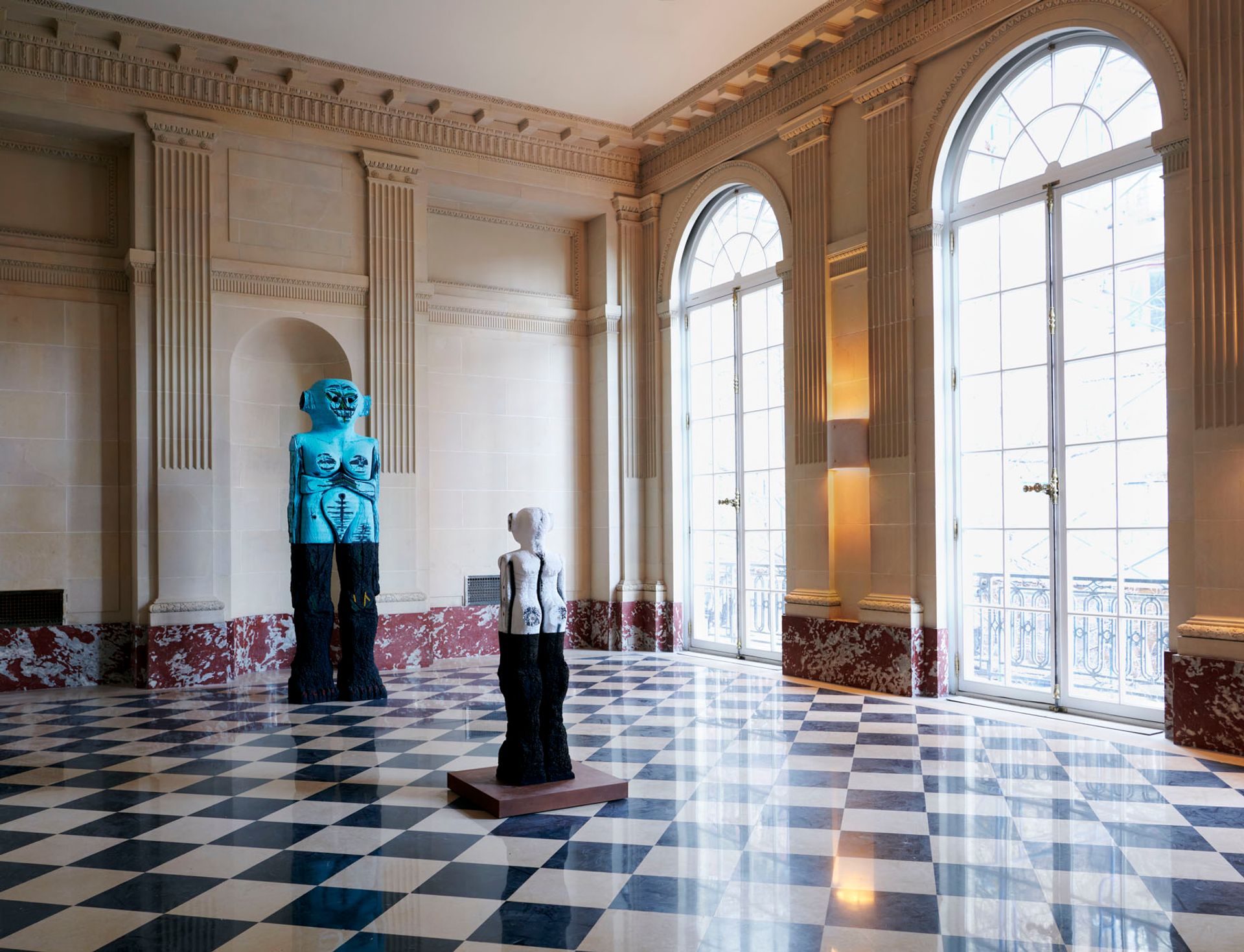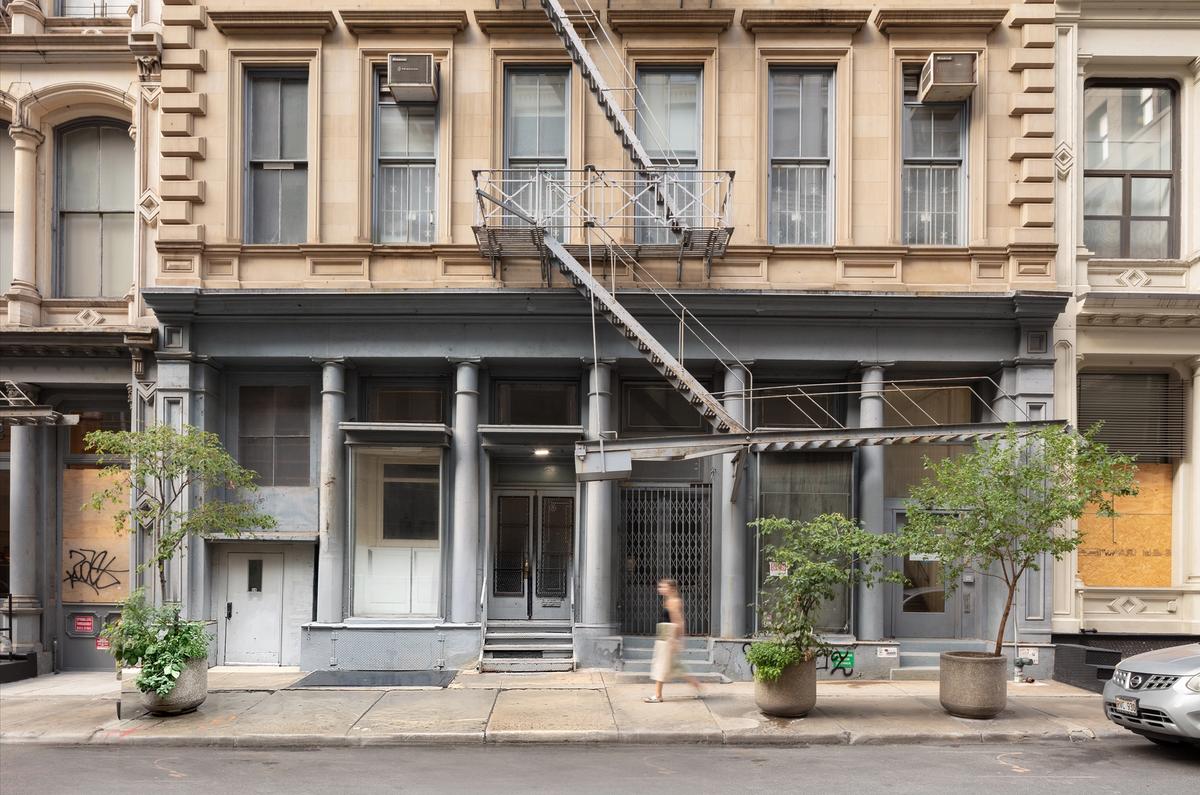The art market may have shrunk over the past year but amid the Covid-19 chaos, three mid-tier galleries—all of which received PPP loans—are seizing the opportunity expand. Here they tell us why they are growing, and reflect on a turbulent year.
Grimm Gallery
Amsterdam dealer Jorg Grimm set up shop in a storefront space on the Bowery in 2017 in order to build the careers of his artists in the US—more than two thirds of his roster lacked representation in New York. Then, the pandemic brought a “once-in-a-lifetime opportunity,” Grimm says, when the Tribeca record archive ARC Records moved and its 6000-square-foot, ground-floor cast-iron space sat on the market for two months while New Yorkers left the city in droves. Grimm signed on for a 10-year lease at a 20% discount and opened the gallery with a gallery artists group show last Saturday.
TAN: How has the pandemic impacted your gallery? Have you seen a decline in sales?
JG: We’ve added a number of collectors, and it’s been a good year. We’ve seen an increase of 20% [in sales] in the Netherlands. I really try for a long-term approach so I was surprised when colleagues started laying off people in the first month of the pandemic. We hired new people like Polina Berlin [as gallery director], new registrars and assistants.
Will the gallery’s approach to art fairs shift moving forward?
We never go crazy with fairs — this may be a Dutch thing where being from Amsterdam you don’t do that anyway. You have a strong local collector base that enables you to keep going without fairs.
Are you expanding the roster?
In the next few years we’ll be adding three to five artists. We’re looking at some mid-career artists that I feel have been overlooked.
The market has undergone significant changes over the past 12 months. Metro Pictures’ Helene Winer described having to reinvent the wheel in the post-Covid world. How will the post-Covid New York art world be different?
I think there will be a new generation of gallerists rising. If you feel the energy is running out, you need to pass over the stick. Give it to your staff, to the next generation, make someone partner. Maybe my generation is more attuned to the fact that that needs to happen. Metro Pictures and Castelli were inventing the wheel, it was a new world being created. Going forward I think there will be much more galleries that will be generously shared in terms of who co-owns things and carrying it forward.
The market has seen consolidation and the narrative of a middle-market squeeze persists. How do you hold on to your artists?
We are friends. Most of my artists are my age. I’ve always approached and asked for collaboration, which I think is good in any case. I’m much more for a collaborative approach. I think what is missing often is the liaison part. Some galleries tend to pay a lot of attention to the collector side of things. I think it’s more important to work with the artist and the process of the artist and the collector will always come — or not.
What’s your strategy when it comes to co-representation?
When we start working with an artist very early in their career, or from the start, such as William Monk, Louise Giovanelli, Alex Dordoy, Claudia Martinez Garay or Arturo Kameya to name a few artists in the program, we immediately start to look for possible representation with a great gallery in their home country in addition to us. Sharing an artist with a (very) large gallery has been a good experience. We share Matthew Day Jackson with Hauser and Wirth for example, and it is great to work with PACE: we co-represent William Monk, and we work with Loie Hollowell in Amsterdam. Marc Glimcher has a very clear vision towards collaboration and sees the importance of a larger ecosystem, and actively implements it.

Grimm's inaugural show of gallery artists at 54 White Street in Tribeca Courtesy of the artists and GRIMM, New York. Photo: Farzad Owrang
Salon 94
Salon 94’s plans to move the gallery’s flagship space from the Bowery to a Beaux Art townhouse on the Upper East Side were underway before the lockdown began in March 2020. Nonetheless, the gallery’s founder Jeanne Greenberg Rohatyn says it has pulled off a Rafael Viñoly-led renovation despite “huge hurdles” and delays posed by the pandemic. The five-story space also opened last Saturday with exhibitions of work by Niki de Saint Phalle (timed with MoMA PS1’s retrospective), Derrick Adams and Takuro Kuwata, alongside custom design objects made for the gallery by Kwangho Lee and Philippe Malouin. The gallery has also added a non-profit side to the business, Salon94+, which will foster performances and readings.
TAN: How has the pandemic impacted your gallery?
JGR: It has kept me focused and has allowed various conversations to take place that we might not have had time to allow for. The art world has been so reactive in the last several years due to a very challenging schedule of art fairs and exhibitions. As a result, we went into the pandemic with an exhausted staff, and with artists who were a bit frayed from so many requests. So this was actually a moment where we could turn in, be contemplative, strategise and have difficult discussions.
Will the staff and roster expand along with the larger space?
The person who spearheaded the great new video on our website is our new head of digital who had worked for The Shed, Allison Knoll…I really do want to see excellence in this territory which we are a bit weak in, so it took a whole team to rethink our digital strategy.
Have you seen a decline in sales?
We’ve had solid sales…I have an active secondary and private sales business with my partner Amalia [Dayan]. That business has been quite good. We have lost the art fair business, clearly. We’re learning how to react to that and make some changes. Certain primary artists have suffered the most. We have artists whose work you just have to see in person—you cannot replace seeing a Marilyn Minter painting in person, for example. It takes many many months to make them and there’s a reason why when you’re standing in front of them. But they don’t reproduce well. They reproduce like a photograph; you can’t see the painterly surfaces.”

Salon 94's lavish new headquarters on the Upper East Side Courtesy of Salon 94
P.P.O.W.
P.P.O.W. began more than three decades ago in a ground floor storefront space in the Lower East Side but ultimately had to move to Soho, then Chelsea, due to “reasons of real estate,” co-founder Wendy Olsoff says. Now the gallery has returned to its roots, opening in a slightly larger storefront space on Broadway earlier this year in what is likely to be the founders’ last such move. It feels great, Olsoff says, “to go back to a ground floor space in what is presumably—me and Penny [Pilkington] are 64 now and we have a 10-year lease.”
The gallery has hit its stride over the past five years, with tastes finally catching up to its long-held focus on underrepresented artists and figurative painting. When Jeff Koons and Ashley Bickerton were ascendant in the 1990s, P.P.O.W. struggled to put artists like Nancy Spero, Carrie Mae Weems, and David Wojnrowicz on the map. The gallery’s founders enjoy being in a grittier, “more humane” part of New York and a more collegial gallery community, Olsoff said, but cautioned that in five years’ time “it might feel very different,” with galleries so often leading to an influx of expensive boutiques and hotels.
TAN: How has the pandemic impacted your gallery?
WO: At first it was terrifying because it felt like we were on the edge of a precipice as we’ve been on before. But we could see from our bottom line that sales were still happening. Our program that we’ve been developing for 37 years dovetails really well with what’s being shown right now. And without doing travel, art fairs and exhibitions, you save money. So even if you make less money, you make more profit.
Have your priorities or strategies shifted over the past 12 months? Will you do fewer art fairs or exhibitions?
If you don’t do eight or nine shows a year the artists get really pushed back, and not having art fairs limits the exposure of your artists. So it’s not really different — we haven’t changed in terms of our exhibition calendar. In terms of art fairs, I’m already committed to Frieze at The Shed, Armory in September, and Art Basel in Miami Beach. We like doing fairs, we’ve always done fairs since the ’80s…We do seven or eight fairs a year—some of them small ones. We are conscious of trying to reduce our carbon footprint.
How will the post-Covid New York art world be different?
I’m in two minds about it. On one hand, I think there’s no turning back to the way we were, with what’s happened. Talking about our carbon footprint, talking about a more inclusive, diverse art world, talking about a more politically correct place that honours a more just society. We can’t possibly go back. On the other hand, I see capitalism as an extremely strong pull that will take us not only back to where we were but to a more obscene version of where we were…I don’t know the answer. I could see stopping at some point, you know, just not dealing with the unknown future, these digital components, the energy it takes to do the fairs. But we have a young, invigorated staff.
Would you pass the baton to younger staff before making the decision to close the gallery?
My role models right now are Barbara Gladstone, Paula Cooper, and Marian Goodman so I’m looking at those women and thinking I have a good 20 years before I have to make this decision. If there was a way to pass it on and it was financially viable, I would, of course.
What’s your strategy on co-representing artists?
We share Carolee Schneeman’s estate with Lelong. It’s been a fantastic experience. We work with mor charpentier in Paris and Hales gallery in London. I think it’s really important to have co-representation and work with galleries that have the same ethos. An artist is not always going to do well. There will be ups and downs. People who will stay committed to the artist and agree to be showing it all the time when attention has turned to something else — that kind of commitment is great. But art dealers are very opinionated people and we’re kind of a strange breed. So, you have to find your match with other galleries, you have to share values, it’s not easy.


